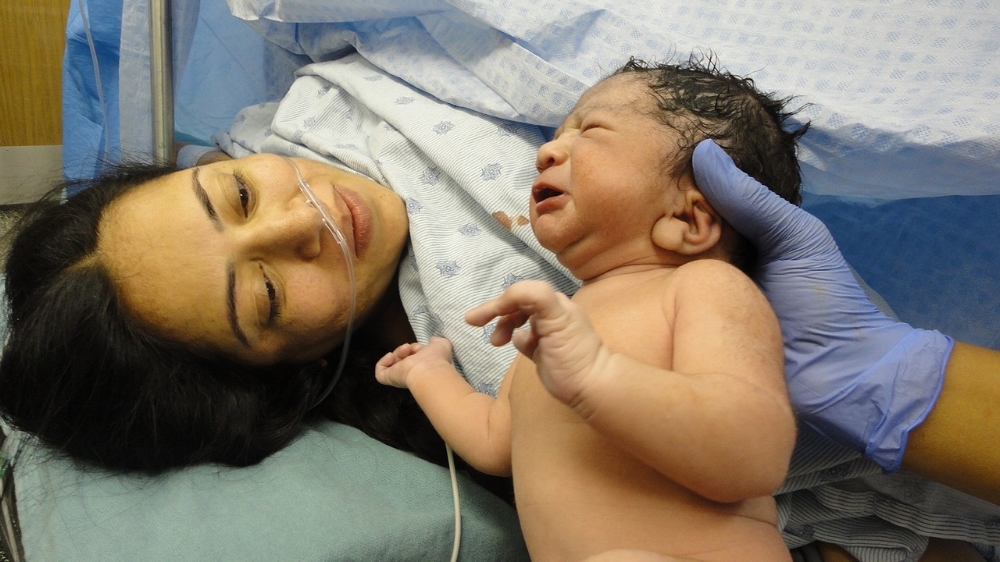April is Cesarean Awareness Month
While I’m a bit late to the game, having just missed all of April for this blog, it’s still a very important topic to touch on.
Why do we need a whole month for awareness about Cesarean Sections? Because the C- Section rate both locally and nationally is far above the level the World Health Organization recommends for optimal health of a population. The WHO recommends a rate of 10-15% would be most beneficial. In 1970, the C-Section rate nationally was just 5.5%, in 2014 that number had risen to 32.2%. That's a staggering increase. Are there really that many more people needing to have their baby born surgically? Yes, No, and it's complicated. Experts agree, there are many unnecessary Cesareans happening. The tough part is to determine which ones are not needed, prior to entering the OR (and that's a conversation well beyond the intent of this post).
Cesarean Section is major surgery. While it has certainly gotten safer over the years, it still takes a significant toll on the body, resulting in longer recovery time typically, than from a vaginal birth. There are also implications for the safety and management of future pregnancies for someone who's given birth by Cesarean. The decision to do a C-Section is not one to be made lightly. While every birth carries some inherent risk, all other things being equal-- birth by C-Section is more risky than a vaginal birth. Among the most common complications- uterine infection, significant pain at the scar site, more painful recovery, breastfeeding challenges, and difficulty in finding support for a successful VBAC (Vaginal Birth After Cesarean) (others may bring up additional potential complications, these are the ones I feel most make a significant impact for people).
Where you give birth may be one of the most significant influences to how likely you are to have a C-Section (Washington State Hospital C-Section Rates, Out of Hospital Rates). For those planning an out of hospital birth, the rate nationally is just 5.2%. Not everyone is a good candidate for a homebirth though. What if your circumstances or preferences require you to give birth at a hospital with a high C-Section rate? Do not despair-- many of the people giving birth at that hospital have pushed their baby out!
You can increase your odds of being one of them by following the Lamaze 6 Healthy Birth Practices.
1. Let Labor Start On it's Own - Whenever practical be patient. This is harder than it sounds. As your due date comes and goes, or potential concerns loom about your pregnancy the itch to get labor started can be overwhelming. There are certainly times when the benefits of induction outweigh the risks- ask questions of your care provider around the risks to continuing pregnancy and how those might best be handled. Know your options. A body not in labor, being forced into it-- may or may not buy in to the plan. Within my doula practice about half the people who get induced have an unexpected Cesarean.
2. Get Upright and Get Moving- We all know it's a tight fit getting a baby head through the pelvis. Let gravity help a bit-- through all parts of labor. A bit of moving and shaking helps jiggle that little one down and out.
3. Get a Doula (Lamaze actually says loved one, doula or other continuous labor support)- Doulas know stuff- positions for labor and comfort, help laboring people ask questions and generally help people be more relaxed. Many studies have shown that the presence of a nurturing, knowledgeable support person in labor can reduce the chances of a Cesarean.
4. Avoid Unnecessary Interventions. Birth tends to unfold more smoothly the less we intervene. Even just having continuous fetal monitoring or an IV has an impact—with increased discomfort, less ease of movement and a greater chance of Cesarean Section.
5. Be Upright for Pushing. The simplicity of not sitting on your coccyx (tailbone) thus giving it free movement for the baby to move through as well as a bit of gravity to help with bringing the baby down—this makes a difference.
6. Keep Your Baby with You- This is the final piece of the Lamaze Healthy birth practices and not as relevant to the prevention of unnecessary C-sections. However, people who do have a Cesarean, should be especially thoughtful in early breastfeeding efforts. It is a significant stress on the body to have major surgery—discomfort afterwards, potential separation from baby and other factors contribute to an often rockier start to breastfeeding for these families.
A couple of other tips for avoiding an unnecessary Cesarean Section:
Take a Childbirth Education Class- I know you have lots of reasons not to-- money, time, you heard it all from books, friends and the internet. Actually- you didn't. When you find a good quality childbirth educator they are going to be able to give you some insider tips, and tune up your relaxation skills. Even if you are already a pretty chill person-- it takes some serious concentration to relax through big labor contractions-- have a pro help you up your game. (My next blog post will include an overview on why to take a childbirth education class).
Be patient- Labor takes time, especially for someone whose body hasn't done it before. With all the fuss and worry of preparation, and perhaps the discomfort of feeling like a watched pot-- it may take time for your body to feel safe to open up. Patience doesn't mean passive though. Alternating rest and activity, and making sure to eat and drink will help assure you have the energy needed to go as long as it takes. Remember- it is normal to feel completely and utterly exhausted at some point in labor- it often comes just before or during pushing.
Here's a bonus activity for avoiding a C-section-- do some of the balancing activities found on the Spinning Babies website. I encourage people to do these in pregnancy and whenever labor feels stalled (check the instructions carefully for which activities may not be right for you). For more on the importance of activities in pregnancy and labor that can help give the best possible chance at a smooth and efficient labor, I suggest you consider taking my 3 hour "Get That Baby Out Workshop" . In it, we practice and hone skills for various positions and activities, discuss when each can be useful, and look at variations to fit your body and needs.
If, despite your best efforts, a Cesarean is the best choice for how your baby needs to be born, know that you are in no way a failure. There is a degree of uncertainty in every birth that can make things more complicated. Sometimes it’s just safer and better to be born in the OR. Consider some of your options for having the Best Cesarean Possible (click through to articles and resources, Thank You Penny Simkin for this wonderful tool).
Some people have negative (sometimes very strong) feelings to work through after their Cesarean Birth. If this happens to you, know you are not alone. The International Cesarean Awareness Network, with local monthly meetings, is a good way to meet others for support following a disappointing C-Section.
Do what you can, and what is right for you, to have the best possible birth experience.



